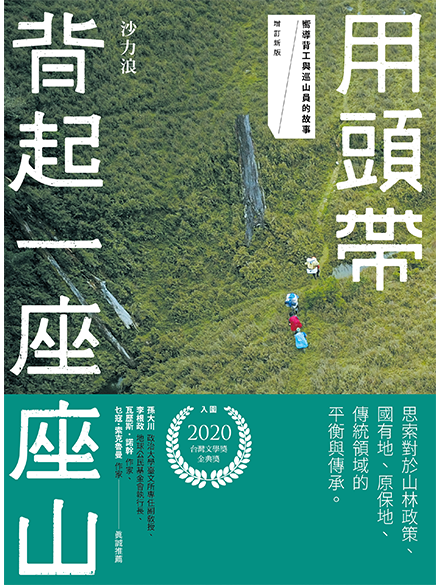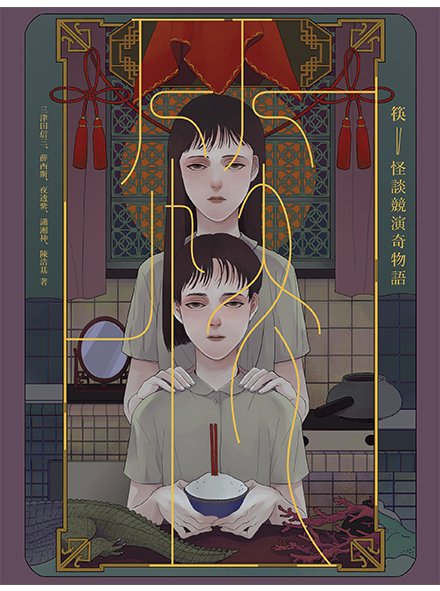Read Previous Part: https://booksfromtaiwan.tw/latest_info.php?id=131
Fickle friends and rhetorical flow
The need to sometimes rely on direct translation techniques can also inadvertently detract from clarity. The clunker above, for example, might have suggested an alternate interpretation, i.e. it was the chance to be together in the mountains that made the young couple start singing with joy, not the fact of being there. Fortunately, the context of the passage makes this interpretation impossible — they are clearly in the mountains when they start singing — but what if it hadn’t? What if we encountered a passage in which the meaning of a given sentence was translated correctly, but its intent was still obscure, because its wording didn’t connect to the rhetorical context of the passage as a whole? The sentence would have preserved meaning in the narrowest sense, while having lost the thrust, the narrative logic. It would amount to a clunker on the discourse level, rather than the sentence level.
An example of this kind of clunker can be found in another Sinophone novel that won prestigious awards based on the English translation. In this passage, a character describes his reaction to words of wisdom imparted by the abbot of a Buddhist monastery:
The abbot shook his head and said, “No, emptiness is not nothingness. Emptiness is a type of existence. You must use this existential emptiness to fill yourself.”
His words were very enlightening to me. Later, after I thought about it a bit, I realized that it wasn’t Buddhist philosophy at all, but was more akin to some modern physics theories. The abbot also told me he wasn’t going to discuss Buddhism with me. His reason was the same as my high school teacher’s: with my sort, he’d just be wasting his time.
The translation is accurate in the particulars, but the reader may struggle a to grasp the mechanics of the discourse. One problem lies in the rhetorical looseness of the phrase: “The abbot also told me…” The phrase suggests two possibilities. Either this is something the abbot said in addition to what came before, or it is something said first by someone else, and then said by the abbot as well. When I first read the passage I assumed the former interpretation, but was bothered by the rhetorical clunkiness of the phrase. What was the intent behind this sentence? Perhaps I had misunderstood, and there was a “someone else,” the high school teacher, perhaps? I went back to read the passages concerning the teacher, but I found that this interpretation made no sense either. Only after reading the Chinese source text did I understand the rhetorical logic: first the narrator concludes that what he was taught was not Buddhism. Then, he reveals that the abbot had said something that also supported that conclusion. In this context, the phrase might best have been rendered, “Indeed, the abbot had told me he wasn’t going to discuss Buddhism with me.” Rhetorically speaking, its function is to confirm the narrator’s assessment that what he was told was not Buddhism.
The Chinese text was more clear since the word ye (也) (rendered as “also” in the translation) did not so deeply suggest the alternate interpretation, while at the same time it cast a wider net for what sort of action was being repeated. It wasn’t that the abbot told him something that someone else “also” told him, rather that the abbot’s words also reinforced his own conclusions. My rewording of this rhetorical logic shows that “also” is not necessarily the wrong word choice, but how it is interpreted is dependent on the exact phrasing of the current sentence, the general rhetorical flow of the passage, and even earlier events that might be textually far removed within the novel (which is why I went back to reread passages concerning the narrator’s high school teacher). In short, the direct translation from Chinese produced a semantically equivalent English phrase that nonetheless failed to maintain rhetorical continuity with the surrounding text The confusion arises from a failure to attend to the dimension of discourse, perhaps because the translator had already determined on the sentence level that a direct translation of the Chinese would be adequate. Again, the biases introduced by the process of triage — selecting what can and cannot be translated directly — can have far reaching consequences that will only become apparent when the English rendering is complete, and can be understood in its own context.
Naturally, European languages will also lay traps for translators. The problem of “false friends” is well known, where a word in the target language appears to be a close match for a word in the source language, but in fact carries a very different meaning. The problem in Chinese to English translation, however, seems to be one of “fickle friends” that sometimes operate in relatively equivalent ways, and sometimes lead you astray. This may be due to the fact that there is very little genetic relationship between the languages, so similar structures are never true cognates. Their similarity is only skin deep, and is bound to mask vast differences as well — perhaps differences of usage, tone, register, voice, or, as we have just noted, rhetorical function. But, at the same time, the process of triage demands that we leverage whatever similarities are available to avoid being overwhelmed by the depth of the chasm that must be bridged.
Most translators will be familiar with these fickle friends, because they will sometimes root them out while editing their work for improved readability and stylistic effect. Yet, some clunkers, rhetorical or otherwise, still make it into the final draft. A few reasons for this have already been suggested. The translator may be reluctant to return to the original text and attempt an entirely new approach, instead attempting to massage the existing translation into a better form. It is also possible that there were more prominent issues that demanded the translator’s attention during the most recent pass of editing (essentially the concept of triage applied to editing). Alternatively, after numerous passes, the translator may have simply become accustomed to the offending sentence — the classic case of needing “new eyes” to identify old problems.
On domesticating the clunker
Having explored some of the reasons that unintended clunkers may persist in our translations, we are now forced to consider another possibility — that some clunkers weren’t accidents! I’ve done my best to focus on shaky passages that most readers will agree need improvement, but one cannot account for taste, and some translators and readers might argue that they like a translated book to be a little rough around the edges. Most often, this preference is defended as a means to preserve the feel of the original text, and is typically is achieved through a more direct style of translation. This strain of thought has developed into an entire theoretical school that argues for the foreignization of translations, that is, leaving as many traces of the foreign origin of the text as possible, while resisting the urge to domesticate the text for ease of consumption by the target audience. Moreover, thinkers of this school feel that it is an ethical imperative not to allow the target language to dominate the rendering of the foreign text as that would be equivalent to forced assimilation of the text, and the erasure of its cultural roots.
A thorough critique of this theory would require a separate article. Here we need only focus on how it relates to the problem of clunkers, and see if it changes our view on correcting them. Here is a sample from a translator who advocates the foreignizing approach: “Shen’s question stunned Wang for a moment. He forced himself to be calm so he wouldn’t fall into a trap.” We can begin to reduce some clunk by first removing “for a moment.” It is unnecessary because readers can infer that Wang isn’t stunned for long, as he immediately sets about trying to calm himself. However, I suspect “calm” is not quite the sense of the word meant in the Chinese; “composed” would be a better fit. Also, some rewording to reduce clutter will help maintain the sense of urgency. This yields: “Shen’s question stunned Wang. Wary of a trap, he forcibly composed himself.”
However, should we be concerned that some of the flavor of the Chinese is lost with these changes? Is there something about the aesthetics of the Chinese language, or the personal style of the author, that is revealed when a suspenseful passage is wordier, or when “for a moment” pops up where English style dictates it shouldn’t? One could ask the same question of our first example. Was something uniquely Chinese conveyed by stacking infinitives and thereby repeating the word “to”? Simply asking these questions forces one to confront their at least one aspect of their absurdity, because we realize it is the English context that dictates how those features are to be interpreted, not the Chinese context from which they originate. The reader of the English translation cannot possibly infer that the Chinese infinitives flowed better when stacked together, or that “for a moment” is not cumbersome in Chinese since it is a single lexical item rather than the three required in English. Lacking these insights, a generous reader might conclude that it must have sounded better in Chinese, but won’t have any idea how that something-better actually sounded. A less generous reader will simply conclude it is a poorly written book, or one that needed more editing, or a better translator. In conclusion, a clunker is still best removed, because for the English reader it can only reflect poorly on the book. Put another way, poor English does not seem well-suited to conveying proper Chinese.
Again, we are simply addressing the clunkers, and not this approach to translation in general. In places where the English actually works, there is no reason we can’t use word-for-word translations that reveal the structure of the Chinese. Even after cleaning up clunkers, most translations will still exhibit a fair amount of literal translation, because the process of triage demands it. Translators will nearly always opt for direct translation when they feel certain it will work. The intent of this article is only to bring attention to the fact that sometimes when we think it’s working, it’s not.
In my own translation work I don’t fear losing much by domesticating problematic portions of the text. Other dimensions of the novel — plot structure, character development, social and political context, and so on — will all bear strong marks of the novel’s culture of origin and continue to foreignize the work even as it is presented in a new language. In fact, as long as a translator isn’t rearranging, cutting, or altering the text wholesale, I find it hard to imagine an English translation of Sinophone fiction that a sensitive reader would mistake for a novel originally written in English. The generally poor sales of translated fiction, particularly those translated from Chinese, should be enough to tell us that readers, for the most part, feel like these books are still too foreign for their tastes. Or, perhaps that simply reminds us of the point that I am making here: we need to be doing a better job. It could be that an English readership would more readily consume translations out of Chinese that maintained a higher standard of clarity, style, and readability.
Can we clunker-proof a translation?
Over the years I have altered my work habits to better safeguard against clunkers. Rather than rush through my first translation draft on the assumption I will work out the kinks in editing, I now take the time needed to develop a fairly readable and stylish first draft. In doing this, I hope to avoid falling too deeply into the triage mentality. The more rushed I am, the more likely I am to declare that certain passages probably won’t require much thought. As explained above, these lacuna in our attention are the places where clunkers often take root. It also makes sense to develop a better first draft because I am aware of my own reluctance to rework a passage from scratch. Thus the better it reads in the first draft, the more likely it is that a few more tweaks will be enough to get it into an acceptable final form. What I hope to avoid is a situation where I have convinced myself that those few minor tweaks were good enough, when in fact they only left the sentence in a state of mildly improved clunkiness. Creating a better first draft also means there are fewer clunkers to address in editing. Hopefully they will stand out more, and I can fix them in the first round of editing. That way there is less risk of my becoming accustomed to them over repeated passes.
Clearly, editors also have a major role to play in this process. However, on the evidence of the clunkers in print, one might suspect that editors are exercising a light touch with translations out of Chinese (as I said before, I doubt these clunkers would have slipped past in a manuscript originally written in English). Or, perhaps the situation faced by the editor is not so different to that of the translator: confronted by a translated text that defies many conventions of English writing, the editor applies a strategy of triage, over-attending to some issues while under-attending to others. Some editors may even be entranced by their own version of the theory of foreignization. Perhaps they assume that within those clunkers lurks something inherently Chinese, or something integral to the voice of the author that they dare not touch for fear of overly domesticating it.
For these reasons that I am particularly happy to be writing in this forum where I can potentially reach people in book editing and acquisitions. These are professionals who have a say in what makes it into a published translation. Regardless of whether a clunker appeared by intent or neglect, it is worthwhile to point it out to your translator. If it was an oversight, the translator will be grateful. If it was a failed attempt at foreignization, the editor is hopefully now better armed to successfully argue that point. And hopefully translators who read this will be more open to amending their clunkers, even if they are committed to a more foreignizing approach. In the struggle to better represent the voices of Sinophone authors in English, eliminating what is worst in our translations can be an effective means of highlighting their best.








